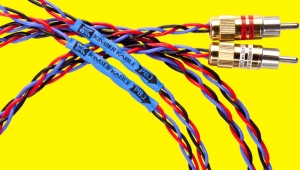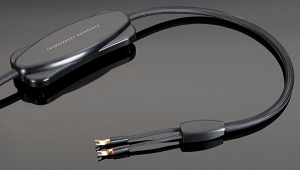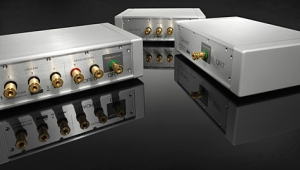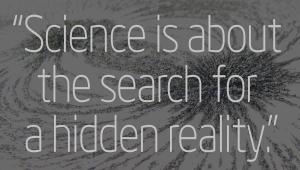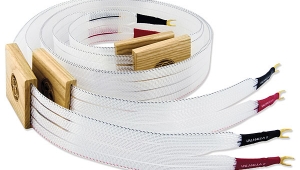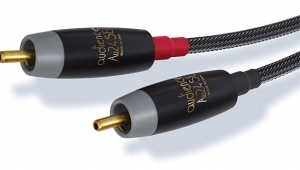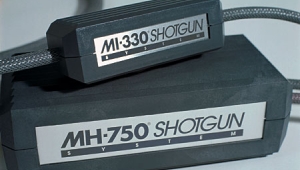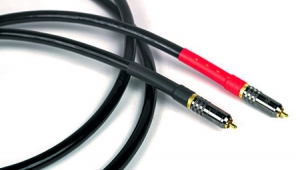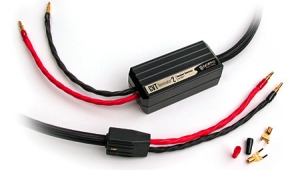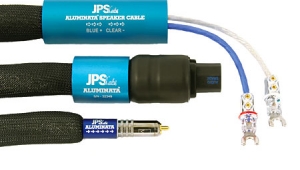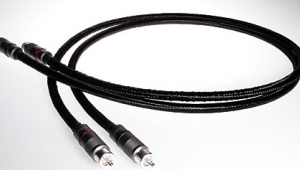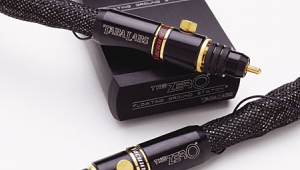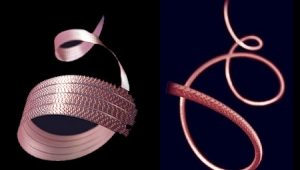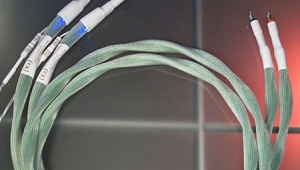| Columns Retired Columns & Blogs |
Audience Au24e cables
Call me shallow, but what first attracted me to Audience's Au24 cables when I reviewed them in August 2002 was their looks. In contrast to superstiff cables as thick as garden hoses, the Au24s were slender and elegant. They were wonderfully flexible, too, and even their custom-made RCA plugs were slim and easy to handle. Instead of having to fiddle with a system of locking collet and barrel, merely slipping them on resulted in a tight, solid connection. Compared to the Au24s, a sizable number of audiophile cables seemed excessive, even a little foolish.

Fortunately for shallow, superficial me, the Au24s sounded as good as they looked. They were notable for their tonal neutrality, and how well they balanced a wide spectrum of sonic characteristics. I categorize cables, and most other products, by where they fall on a series of sliding scales. Is their tonal balance cool, warm, or somewhere in between? Do they emphasize the lines and details of images, or more solidly fill in their bodies? Are the leading edges of transients sharp, or do they flow smoothly into the bodies of notes? Is my overriding impression one of speed, or of a smoother, more languid flow? Is the soundstage a stark, open space with sharply outlined images, or a more continuous, coherent space in which instruments, air, and hall boundaries all merge seamlessly? More than any other cables I'd heard, the Audience Au24s fell near the middle of every one of these scales.
On the downside, the Au24s fell a little short in the areas of transparency and resolution of detail. There was always the tiniest bit of haze or fog obscuring the subtler nuances of a recording space's ambience, preventing me from "seeing" clearly to the back of the stage. Similarly, the Au24s sounded nicely detailed, but seemed to paint with a slightly broader brush than did some of my reference cables. But these subtle shortfalls were apparent only when I directly compared the Au24s to my references: Nordost's Valhalla, Nirvana's SL, and Stereovox's SEI-600II and LSP-600 interconnect and speaker cable. On the other hand, none of these quite matched the Au24's overall balance.
What makes an Au24 an Au24e?
The "e" versions of the Au24 cables share the originals' good looks. In fact, they look exactly the same, save for the addition of a mesh outer sheath and an e added to the product name. When I asked, Audience confirmed that, in terms of conductors, materials, and construction, the "e" versions are exactly the same as the standard Au24s. The differences are that the "e" versions have been sent out for an undisclosed treatment, and a much more involved and apparently labor-intensive process is used to attach the terminations to the cable. Everyone at Audience was tight-lipped about the details, but claimed that the "e" modifications "made a measurable difference in conductivity." When an Au24 cable is returned for upgrading to "e" status, Audience doesn't simply replace it; they actually cut off the old terminations and send the cable through the "e" production process alongside brand-new, virgin cable. Each cable is then re-terminated and burned-in for 48 hours, and sent—now a little shorter—back to the owner as an Au24e.
Listening
I've never been one to test the water by putting in just one toe. After thoroughly recalibrating myself to a system completely wired with Au24, I replaced every inch of Au24 with freshly burned-in Au24e, taking care to replicate the cables' physical layout. On the analog side, I had a 2m length between my combo of VPI HR-X turntable, Lyra Titan i cartridge, and Sutherland PhD phono preamp; and a 1m length between the PhD and a Placette Active Line Stage. I used a 1m set between my Primare CD31 CD player and the Placette, 3m runs from the Placette to my VTL monoblocks, and 2m speaker cables from the VTLs to my Wilson Audio Sophia II speakers. All interconnects were unbalanced, and the speaker cable was a standard single-wired setup. Prior to any listening, I burned in the cables for about 48 hours on a Duo-Tech Cable Enhancer, then in the system itself for another 48 hours. This seemed to be enough; I heard no changes in the cables' performance over time.
- Log in or register to post comments
